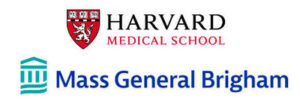Project 3: Deep Brain Stimulation in Laryngeal Dystonia and Voice Tremor
Center Sites: Department of Otolaryngology-Head & Neck Surgery, Massachusetts Eye and Ear; Department of Neurology, Massachusetts General Hospital; Department of Neurosurgery, University of California San Francisco; Departments of Neurosurgery and Otolaryngology, University of Utah, Department of Neurosurgery, University of Iowa; Department of Neurosurgery, UMass Chan Medical School
Lead PIs: Kristina Simonyan, MD, PhD, DrMed, Julie Barkmeier-Kraemer, PhD, Ian Bledsoe, MD, MS, Shervin Rahimpour, MD, FAANS, FCNS, Jeremy Greenlee, MD, Farid Hamzei-Sichanni, MD, PhD
ClinicalTrials.gov registration: NCT05150093
Loss of voice control, which is critical for conveying effective spoken communication, is often a significant feature in patients with movement disorders, such as dystonia and essential tremor. Voice dysfunction, however, has been overshadowed clinically by a focus on limb motor symptoms. For example, deep brain stimulation (DBS) effectively reduces limb dystonia and tremor in these patients, but the modulation of voice symptoms by DBS has been vastly understudied.
It is assumed that the production and modulation of voice are regulated by the basal ganglia-thalamo-cortical network in a loop architecture that is common to all motor behaviors. There is, however, little empirical data to inform our specific understanding of how voice function is encoded in basal ganglia-thalamo-cortical interactions.
The overall goal of this project is to use a combination of invasive and non-invasive human neuroscience to improve our understanding of the incidence and neural correlates of neurological voice disorders (laryngeal dystonia and voice tremor) in patients with isolated dystonia and essential tremor undergoing DBS surgery.
We use simultaneous electrocorticography (ECoG) and subcortical activity recording in dystonia and tremor patients who are awake and speaking during DBS implantation surgery. This work is facilitated by the fact that all participating Center Sites already use the same equipment and techniques for DBS implantation and follow standardized experimental protocols. The disorder-specific intracranial neurophysiological signatures will be correlated with stimulation location defined connectivity maps and voice outcomes.
The results of this project will inform the development of strategies for closed-loop brain stimulation specifically to treat neurological voice dysfunction that can be tested in a subsequent clinical trial.

 Dystonia and Speech Motor Control Laboratory | Department of Otolaryngology-Head & Neck Surgery, Massachusetts Eye and Ear and Harvard Medical School | 243 Charles Street, Suite 421 | Boston, MA 02114 |
Dystonia and Speech Motor Control Laboratory | Department of Otolaryngology-Head & Neck Surgery, Massachusetts Eye and Ear and Harvard Medical School | 243 Charles Street, Suite 421 | Boston, MA 02114 |